Succulents are trendy house plants. Their interesting features and thick waxy texture make them stand out amongst other houseplants.
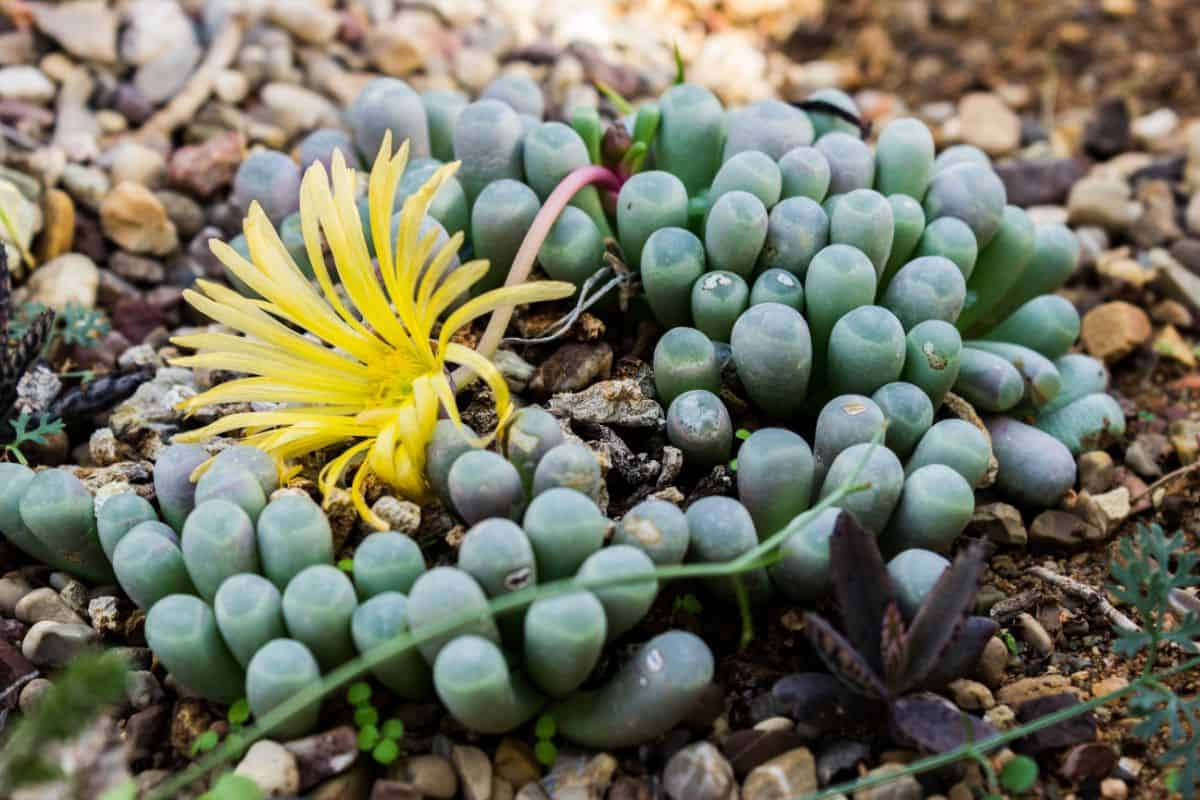
Many people choose to keep their succulents small, displaying miniature succulents that are as short as six inches tall on windowsills and coffee tables in their homes. Succulents can actually grow to great heights, and some even grow to become dominant 12 feet tall plants.
You can control your succulents’ growth by choosing a small or large pot to grow them in. Although having a 12 foot tall succulent in your backyard sounds beautiful and dramatic, every type of succulent has these capabilities.
We are going to be looking at the oh-so-cute baby toes succulent, otherwise known as fenestraria baby toes. In this article, you will learn what their ideal growing conditions are and how to care for your plant. Enjoy!
Jump to:
About Fenestraria Baby Toes
| Name: | Fenestraria Rhopalophylla |
| Soil: | Sandy soil |
| Blooming: | Late Summer to Autumn |
| Light: | Full sun to partial shade |
| Water: | When the soil is completely dry |
| Propagation: | Offsets or seeds |
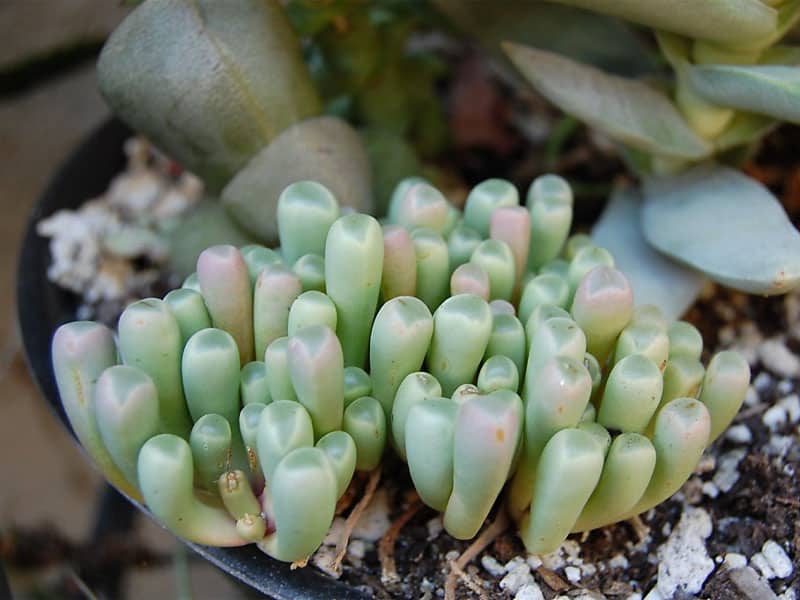
Baby toes are native to Namibia and South Africa, their striking and show-stopping features make them great small houseplants that can be dotted around as living, breathing ornaments.
Some succulent plants bloom beautiful flowers, and this one certainly does! Unlike most plants, these succulents produce their soft white and yellow flowers in the winter months. Like other succulent types, fenestraria baby toes do not need a lot of water to survive as it stores water in its roots and leaves.
Fenestraria Baby Toes Ideal Growing Conditions
In their natural habitats, baby toes grow in sandy soil and dry climates. These are tough plants that can withstand extreme cold and sweltering summers. Your baby toes succulents aren’t particularly fussy where they grow, but if you want to ensure they grow to their full potential and stay healthy, follow the care guide below.
Care Guide
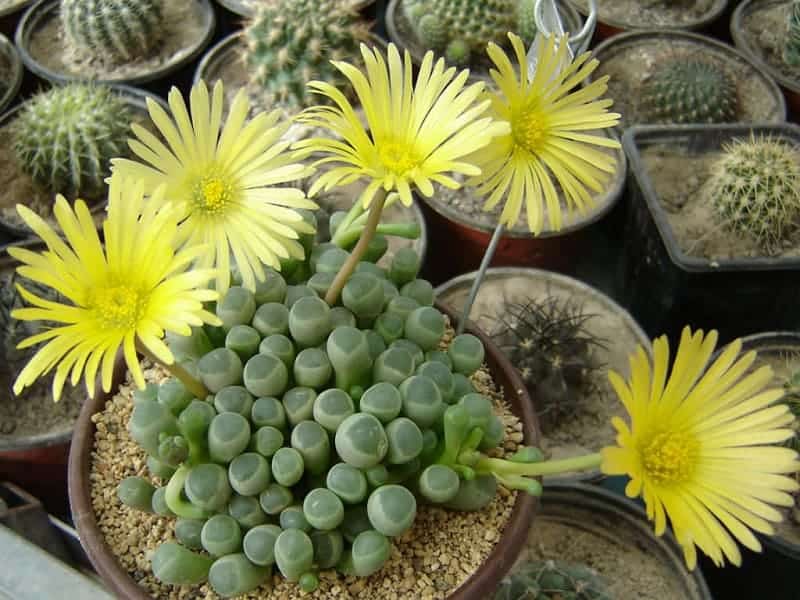
Succulents are perceived to be easy plants to care for, and many people feel baffled when their succulent plants die or do not grow to their full potential. Don’t worry that won’t happen to you as we have put together a clear care guide for you to follow.
Water
No products found.
Water baby toes succulents with great care and a light hand. Overwatering these plants can cause their roots to rot and their thick and juicy leaves to split. Always wait for the soil to be completely dry before watering your plant.
In the summer months, it is best practice to keep the plant and soil mostly dry. If your baby toes are showing signs of discoloration, wilting or soggy leaves, you might have overwatered your plant.
Light
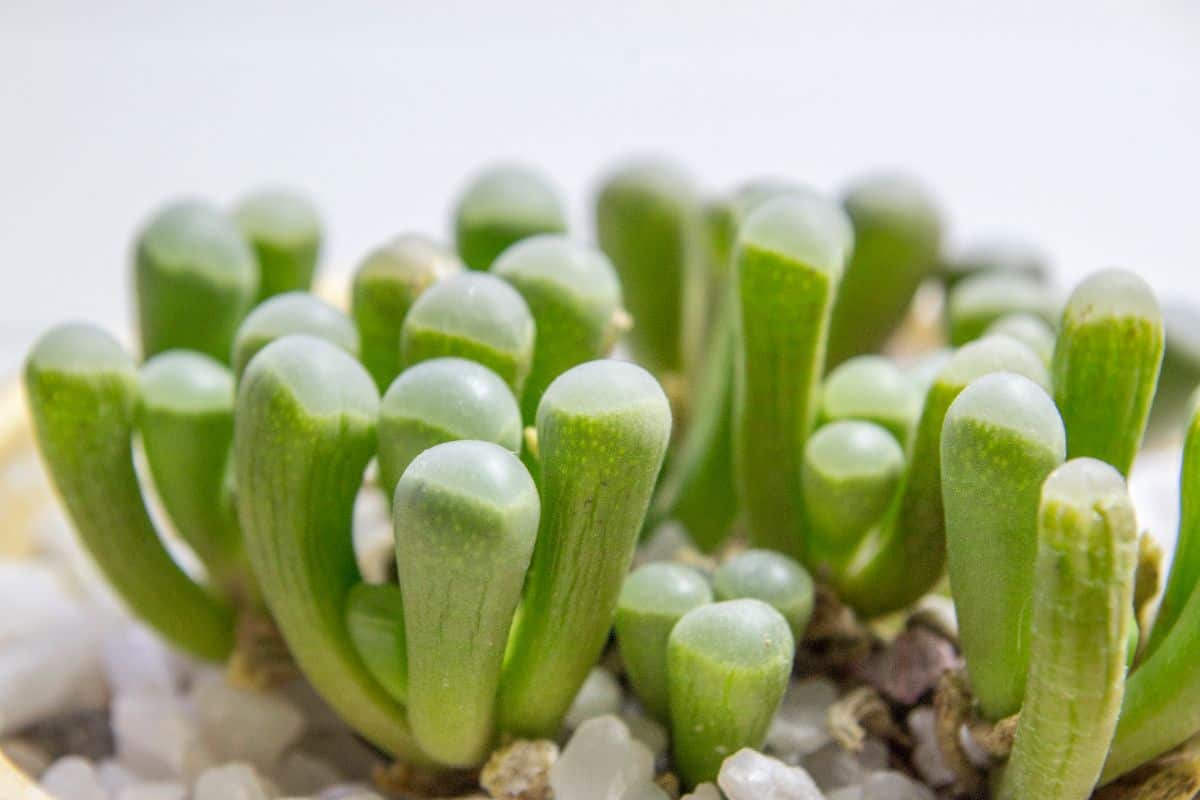
Did you know that baby toes succulents have different light requirements depending on whether they are growing indoors or outdoors? If your plant is growing outside in the backyard, you can put it in full or partial sunlight.
If you are thinking of growing your baby toes succulent inside, you should keep them in bright light, but make sure that any sunlight it receives is indirect and not full on the plant. If these beautiful plants are cared for well, there is no reason for them not to survive all of the seasons and any extreme weather along the way.
You May Also Like: Watch Chain Succulent - An Ultimate Care Guide
Soil
In nature, fenestraria baby toes grow in very sandy, porous soil. In order to create a similar growing environment to their natural habitat, you should mix pumice with your soil.
Blooming
The flowers of these stunning plants are striking. They have delicate narrow petals and will flourish when they have plenty of sunlight and thick routes.
Temperature
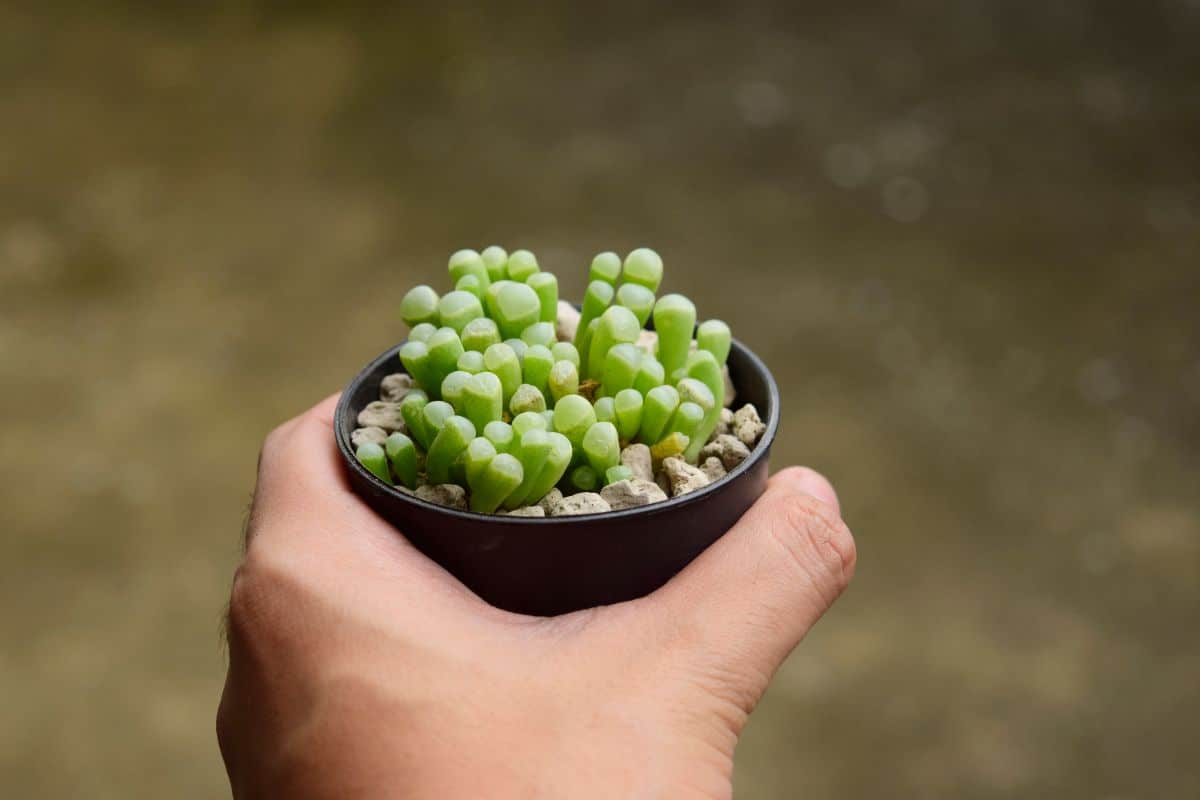
As we mentioned earlier in the article, these plants can grow in pretty extreme temperatures. The fact that they can grow in these seriously challenging weather conditions doesn’t mean that they should.
If you can control their growing environment and protect your succulents from environmental changes, you should do so. Take particular care of your plant in the winter during freezing temperatures and frost. Frost can damage and scar your plant.
Now that you know how to take care of your fenestraria baby toes, let’s make sure you don’t make any mistakes along the way. The following section covers the basic dos and don’ts of looking after baby toes and other succulents.
Succulent FAQ
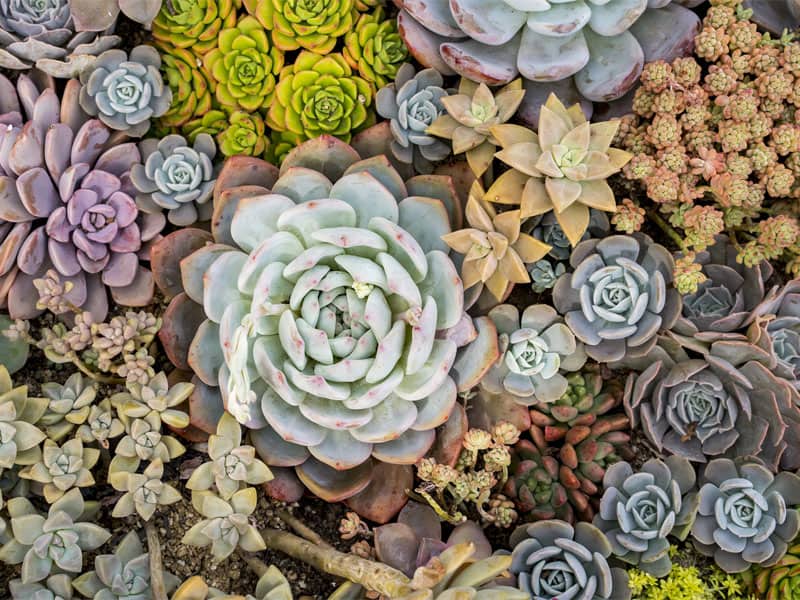
Here is a frequently asked questions section that should answer any of your remaining succulent queries.
Q: What should I do if I’ve overwatered my succulent?
A: Wait until the soil has dried out before re-watering. Do not panic if you overwater your succulent now and then, as these plants take a while to show signs of overwatering. They are strong plants that like dry conditions, and too much water every once in a while won’t kill them.
Q: How can I tell if the soil is fast-draining or not?
A: Fast-draining soil is crumbly or sandy. It can have both big and small granules that will not go mushy when the soil is watered.
Q: How much sun exposure do succulents need?
A: Every type of succulent will need different amounts of sun exposure. To avoid burning your plant, research how much sunlight the type of succulent you have should receive.
Q: Why is frost so bad for succulents?
A: Frost can cause the cells in your succulent to expand and burst. There are a few plants that react in this way to frost. This causes your plant to form scars, and in serious cases, die.
Q: Can some succulents grow outside in cold winters?
A: Yes. of course, some succulents thrive in the cold. These are few and far between, and you will most likely know about it if your succulent will thrive in cold weather.
Q: Should I cut my succulents and replant them?
A: Yes, just like other plants, succulents need to be trimmed. When a succulent grows, they can expose long stems that make them look less aesthetically pleasing. When this happens, you should snip them back to keep them neat and tidy. If you are growing your succulent outside and allowing it to grow to its full size, you do not need to trim it unless a leaf or stem is damaged.
Q: What fertilizer should I give my succulents?
A: succulents prefer liquid fertilizers more than any other type of fertilizer. You shouldn’t slather your plant in fertilizer as it may poison them.
We hope you learned everything you needed to grow your baby toes succulent. As you can see, succulents are not complicated plants to care for, but their requirements are different from other house plants and take a little bit of getting used to.
Enjoy your baby toes succulent, and let us know how it is getting on. We would love to hear about your experiences!


